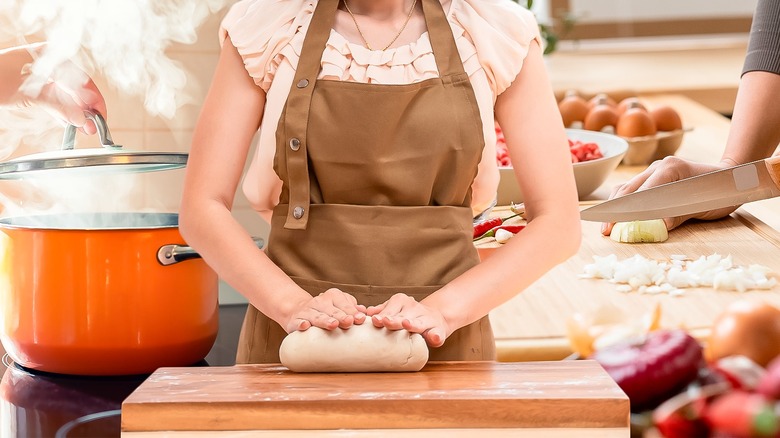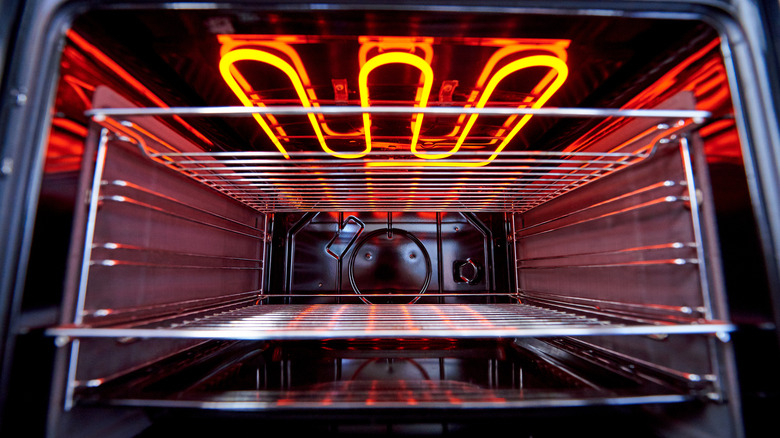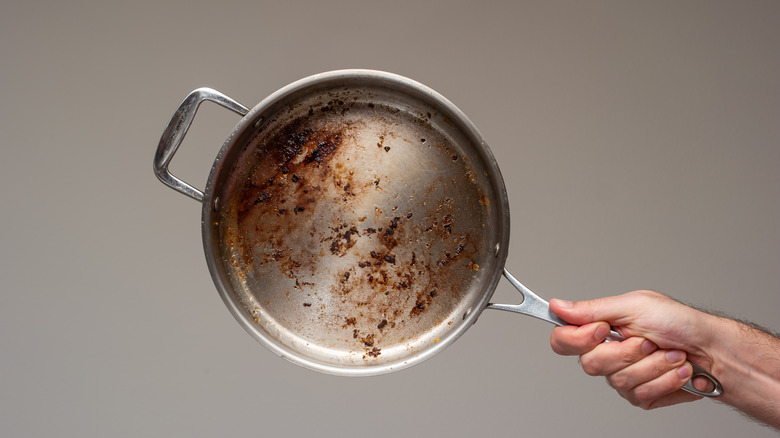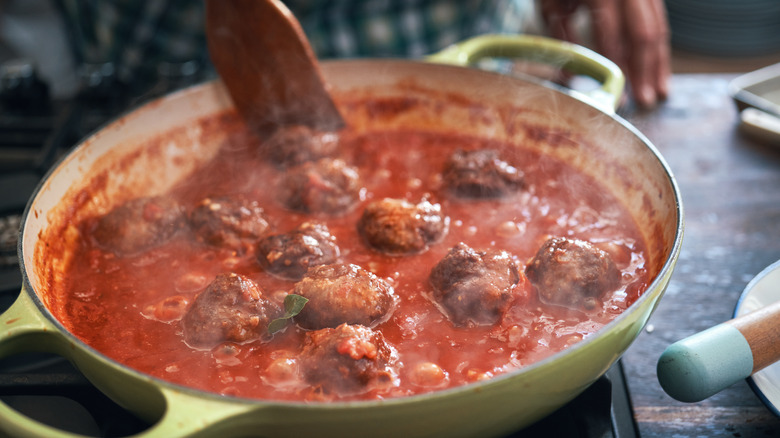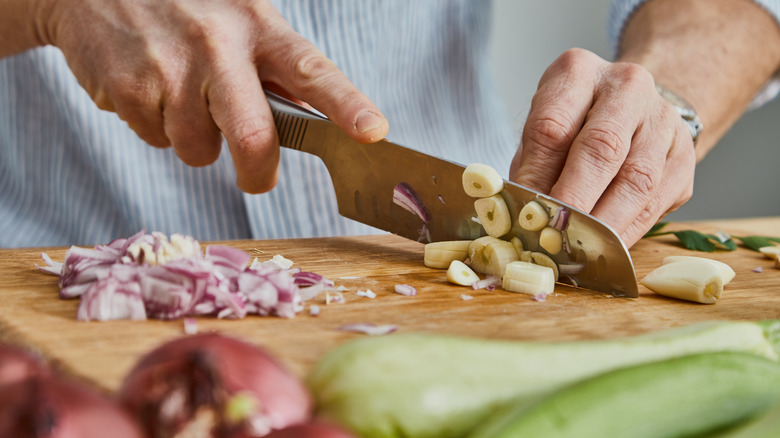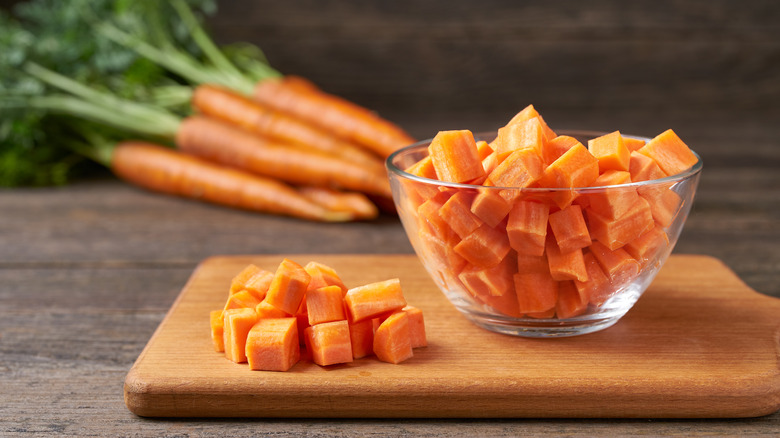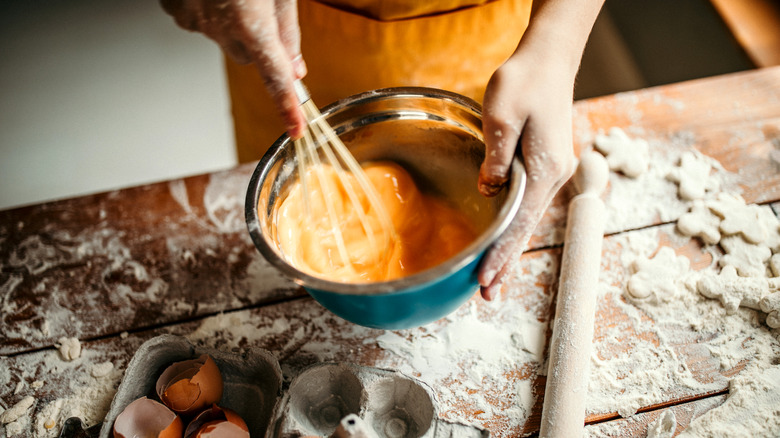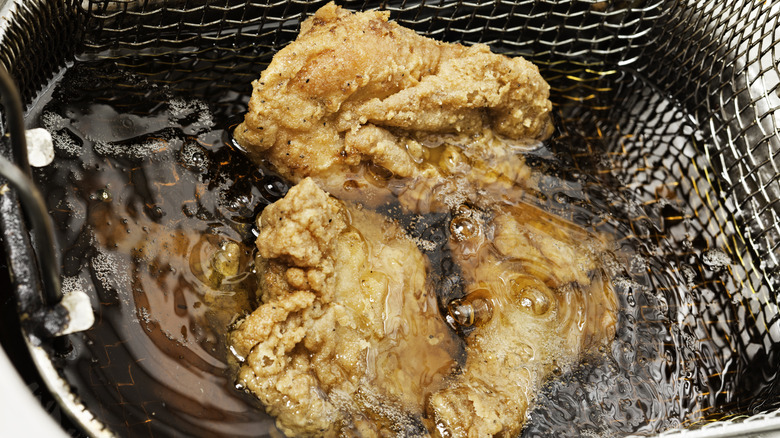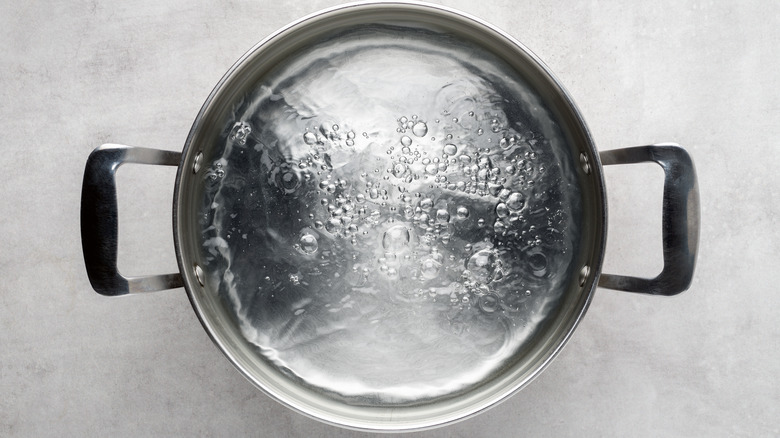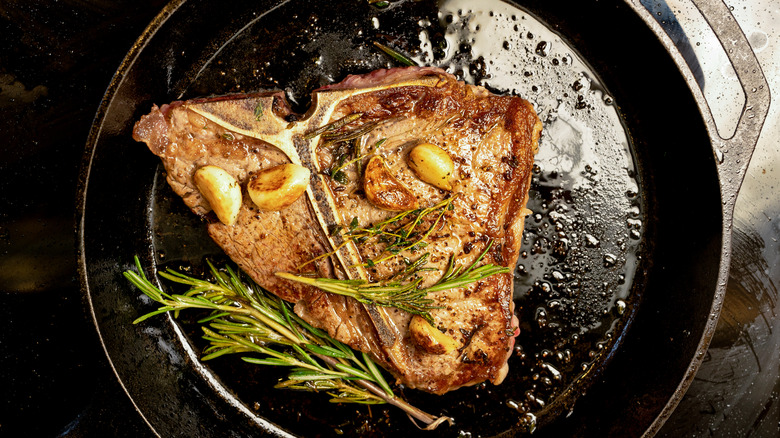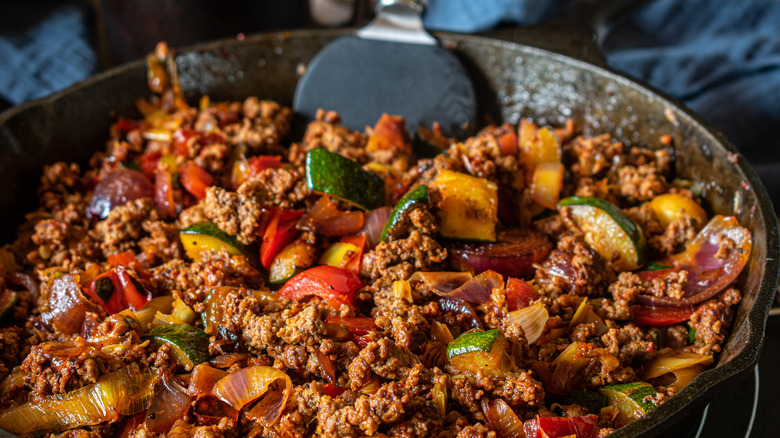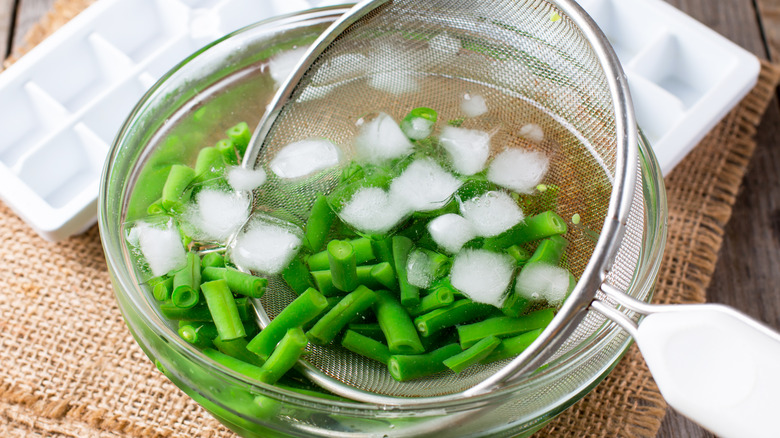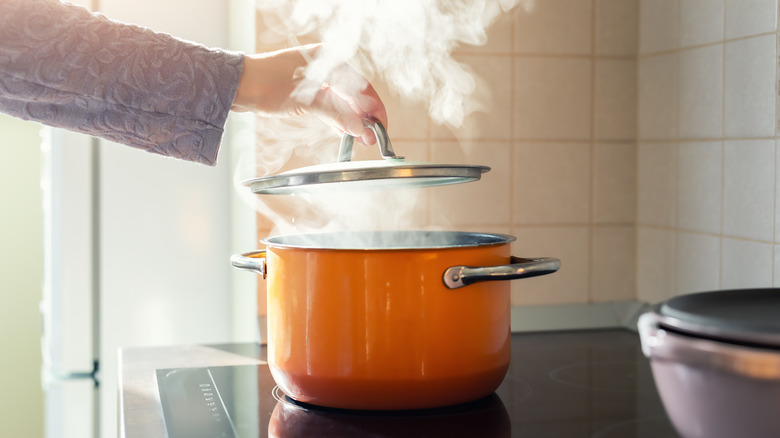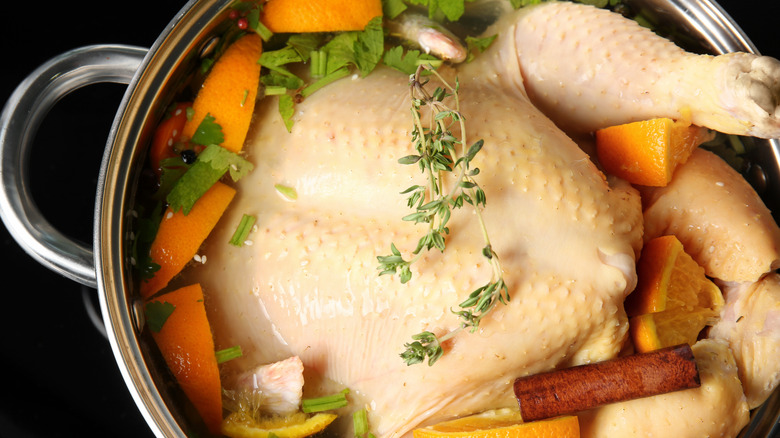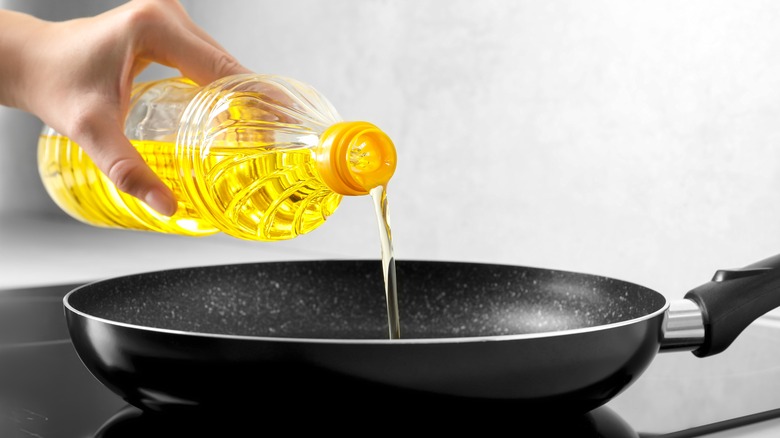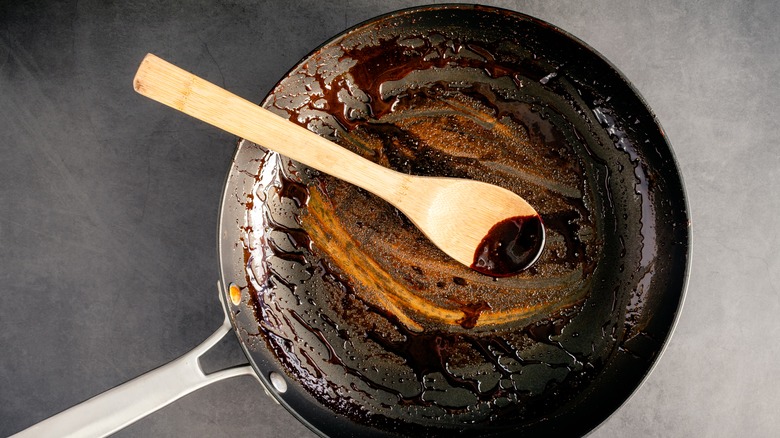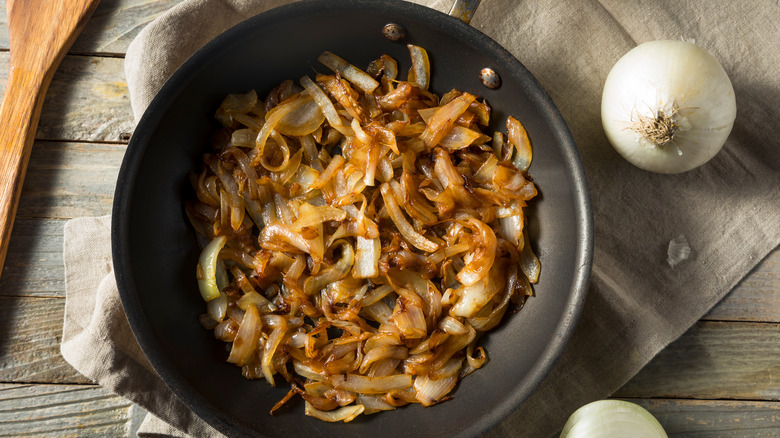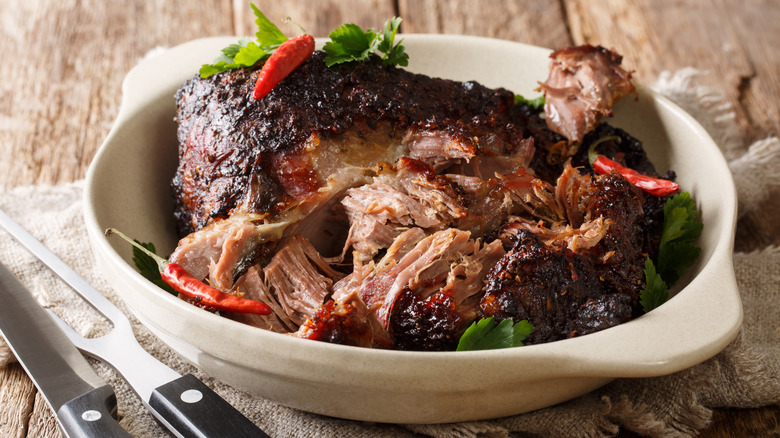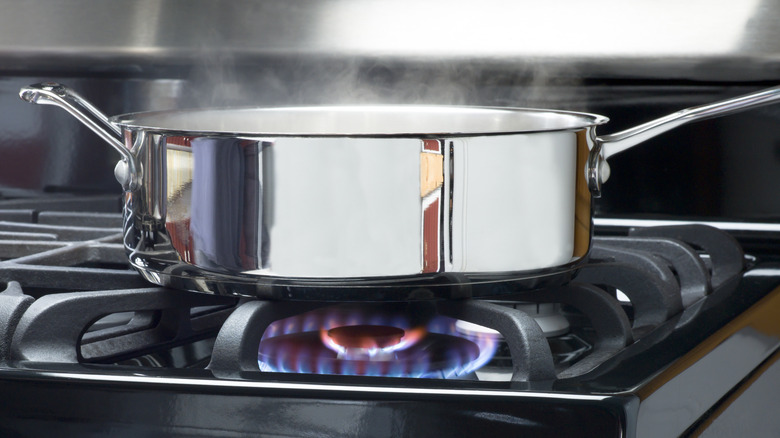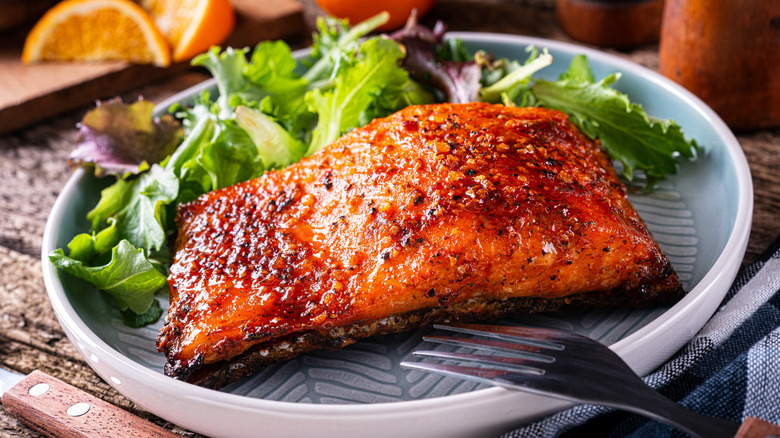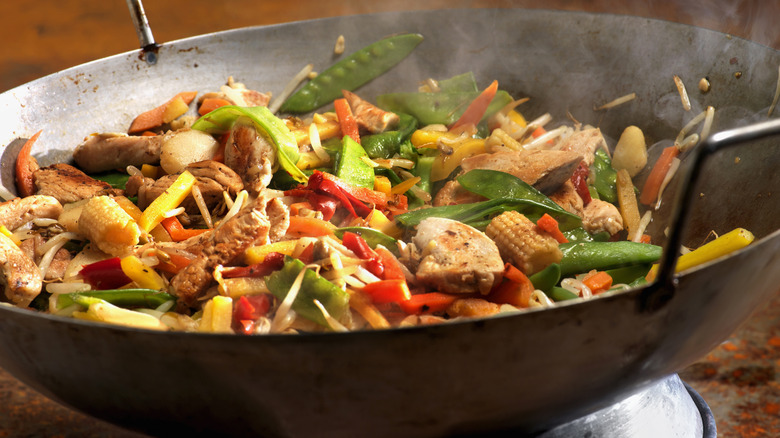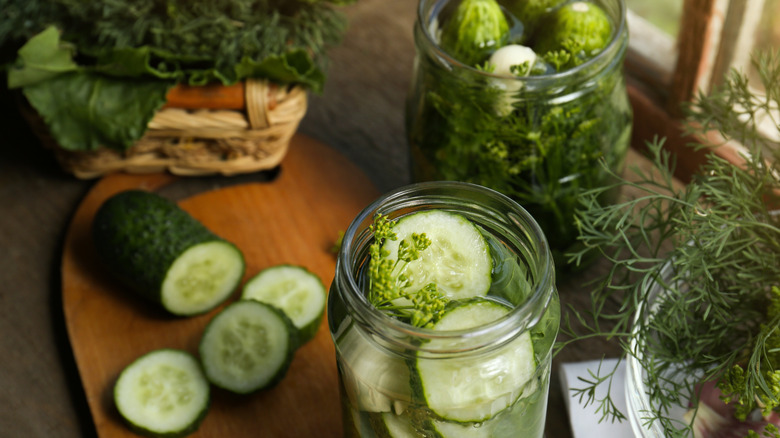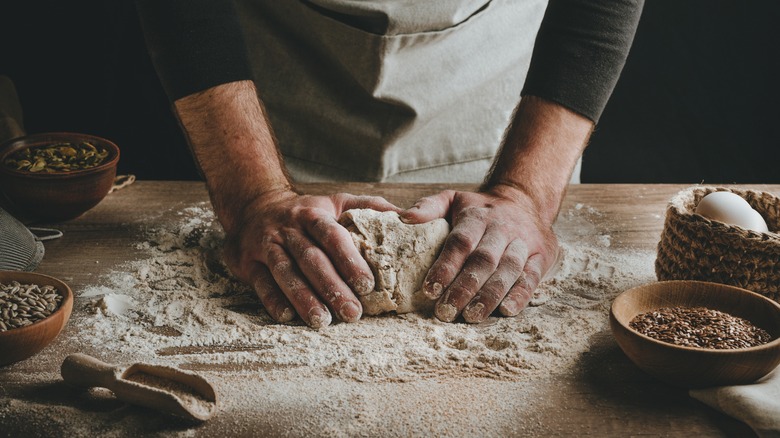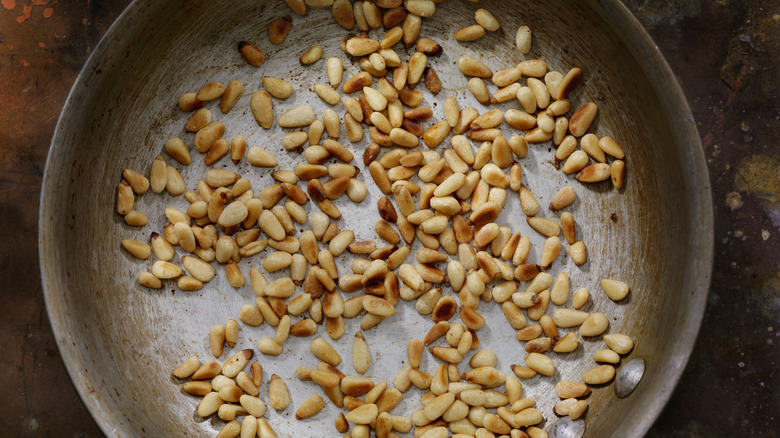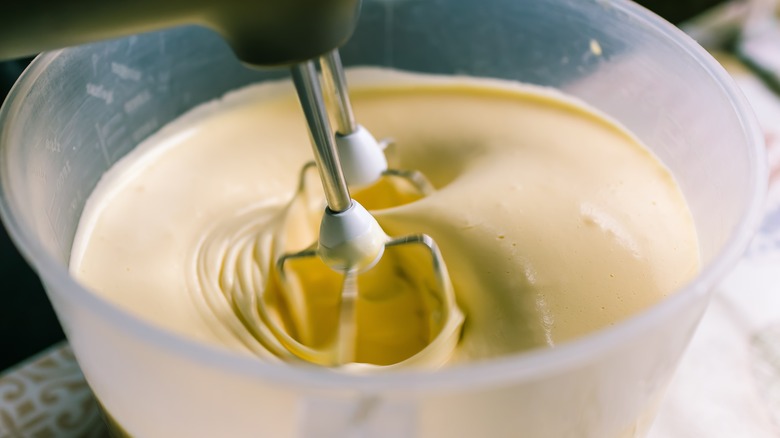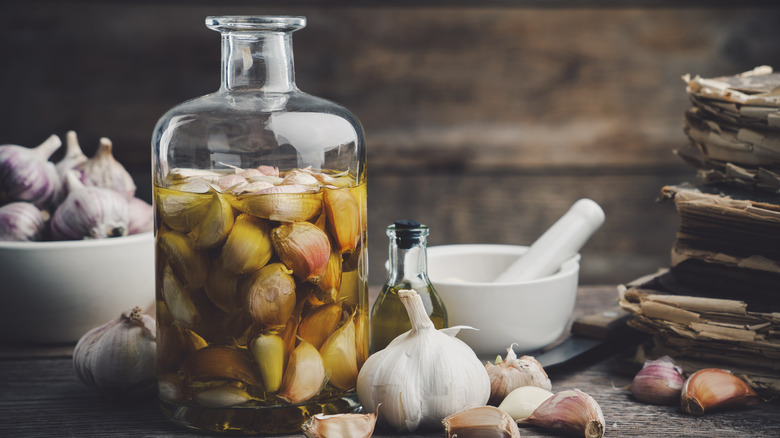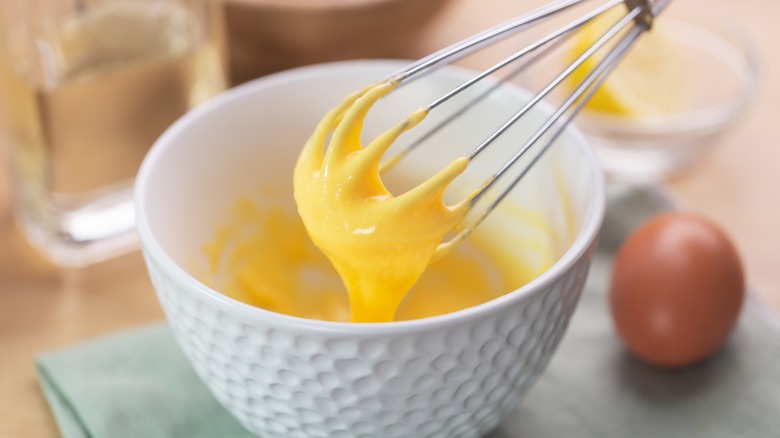30 Cooking Techniques Every Beginner Home Cook Should Know
Becoming an accomplished home cook and exploring the world of culinary techniques can be an exciting and rewarding adventure. Mastering fundamental cooking methods is the key to unlocking fresh flavors and gaining confidence in the kitchen. From sautéing to slow roasting and stir-frying to emulsifying, this article focuses on the essentials with 30 cooking techniques beginner cooks should learn to enhance their skills.
Mastering them takes time and practice, so don't get discouraged as you learn. Keep practicing your cooking skills and continue trying out new recipes. The more you cook, the better you will become and the tastier your dishes will be.
1. Sautéing
Sautéing is a critical cooking technique for a home cook, as it's a common step when making foods such as soups, stews, and sauces. Start by heating a pan on the stove with just enough oil to coat the bottom. Then add ingredients and stir occasionally until browned and cooked through.
You'll want to avoid the common mistakes everyone makes when sautéing, such as crowding the pan. One approach for sautéing and cooking vegetables evenly is to sauté from the ground up. Add ingredients to the pan, starting with those that grow underground and finishing with those that grow above.
2. Broiling
Although broiling occurs in the oven, it's different from the low and slow heat of baking. Broiling employs intense, direct heat from above. You could think of it like grilling, but the flame comes from overhead instead of below.
Many foods you grill may also be broiled, including various cuts of meat, burgers, seafood, and vegetables. Set your oven rack a few inches from the top and place your food on a broiler pan or rack inside a baking sheet. Keep a close eye on anything under the broiler and flip your food to achieve a nice charring on both sides.
3. Deglazing
If you've ever cooked food in a pan, whether it's vegetables, a steak, or just about anything that has browned in the process, you've likely noticed the bits left behind after. In culinary terms, those bits are referred to as fond, and they're full of flavor.
You take advantage of the fond and add it back into your dish through deglazing. And it couldn't be easier. Add a liquid to the hot pan, stir, and cook until the bits are incorporated. You can then use this to create a flavorful pan sauce or while cooking a stew or soup.
4. Folding
A common technique with baking, folding is a simple process, though it can be puzzling if you've never seen it before. Think of folding as a variation on stirring. When you stir a bowl, you usually go in a circular or side-to-side motion. With folding, lift what's on the bottom and move it to the top.
It must be done gently because you're working to incorporate a heavier ingredient into lighter ingredients while folding. You might fold egg whites into a cake batter, for instance. Or perhaps you're making a mousse and must incorporate whipped cream into chocolate. You'd achieve this through folding.
5. Simmering
Simmering is another vital cooking technique. But you're not alone if you've ever wondered the difference between simmering and boiling. Some recipes use the two terms interchangeably. There is a difference, however.
Whether simmering or boiling, you cook food in liquid. Yet simmering uses a gentler heat. A simmer should be just under a boil. Small bubbles should appear on the surface of the liquid, but less rapidly and vigorously than when boiling. This is important because the difference in heat can impact how your food turns out. For instance, you want to simmer beef for a more tender texture when making a stew.
6. Mincing
Mincing may seem like an intimidating technique to master. Fortunately, it isn't difficult. It simply involves cutting up food into small pieces. The smaller you can go, the better.
It may seem like a recipe is just being fussy when it asks you to mince, but there's a reason some ingredients need to be minced. The size that you cut your foods can affect how they taste or how well they blend into your cooking. It's easier for smaller pieces of food to be incorporated than larger ones. Keeping your knives sharp will make mincing a more manageable task.
7. Dicing
While mincing involves cutting food into the smallest pieces possible, dicing involves cutting food into larger, more uniform pieces. You'll encounter several types of knife cuts when reading recipes, each with its purpose. Dicing, however, may be one of the most common.
How large your pieces should be when dicing depends on how you're using them. You can have a large, medium, or small dice. Aim for somewhere between ¼ inch to ½ inch dice when in doubt or a recipe doesn't specify. The dice size can impact how long the food takes to cook and how it looks aesthetically in your final dish.
8. Whisking
Whisking is the act of beating ingredients together using a tool with wire loops. There are one or two goals when using this technique. The first combines ingredients, and the second incorporates air into the ingredients as they're mixed. The simplest example of this is whisking eggs. You combine the whites and yolks to create a uniform-looking liquid and incorporate air so that the eggs turn out light and fluffy.
Whisking isn't only for wet ingredients. It's also helpful to whisk dry ingredients — a tip that will help prevent lumpy pancakes.
9. Deep frying
Deep frying can appear daunting, but you can quickly learn the process with some basic best practices. When deep frying, the food is cooked by fully submerging it in oil and allowing the outer layer to brown while the inside remains moist and flavorful. You can deep fry various foods, from French fries to donuts to chicken, and create some of the most satisfying results.
It's important to remember that everyone makes mistakes when frying food, so it's okay if it's not a technique you master immediately. Make sure to follow basic safety precautions to avoid starting a fire or burning yourself.
10. Boiling
When it comes to cooking, it may not get any more basic than boiling. You boil water to cook pasta, make hard-boiled eggs, prepare soups and stews, and more. Boiling brings liquid past the boiling point or temperature of 212 F.
You're boiling when you see rapid bubbles appearing on the surface of the liquid. Boiling may seem like a simple cooking method, but there is always something new to learn, and there are unexpected tips you need when boiling water. For instance, did you know that placing a wooden spoon across a pot of boiling liquid can prevent it from boiling over?
11. Searing
Searing is quickly cooking the surface of food at high heat until a crunchy browned crust forms. It's commonly used as a step in a larger process. For example, you may sear a steak in a pan before it finishes cooking in the oven at a lower temperature.
When you sear, you add flavor, create texture, and help the food look more attractive. Steaks are commonly seared, and you can appreciate the nicely browned crust when you cut into it on your plate. To take advantage of this technique, keep in mind some of the biggest mistakes you're making when searing steak.
12. Browning
Browning is the process of adding an appetizing brown color to food. But it's about more than just the color. The flavor that is imparted in the browning process is also key.
Remember that browning is a broader term encompassing several techniques, including caramelizing and searing. There is no one way to accomplish browning. It's done through several approaches and can use high or low heat. Whether you're cooking a steak, a stew, or a casserole, it may seem like you can skip the browning process. However, doing so will result in less flavor and less appealing food. Trust us, it's always worth browning.
13. Marinating
When you want to boost the flavor of your food, whether it's meat, seafood, tofu, or vegetables, try marinating. Marinating is when you allow food to spend time in a liquid before cooking so that it has time to absorb flavor and become tender.
Marinades are composed of an acid, such as vinegar, a fat, such as olive oil, and a flavoring, such as herbs. You can likely make a marinade with ingredients already on hand. Vary the flavors and the amount of time your food spends in the marinade, depending on what you're cooking.
14. Blanching
If you can boil, you can blanch. Blanching is when you briefly drop food into boiling water and then quickly cool it down in cold water. The idea is to immediately halt the cooking process.
What's the point of blanching? It depends on the food. You blanch tomatoes or peaches to make it easy to remove the skin. Or you can blanch vegetables before freezing to lock in their color and flavor. The most common way to blanch is with a large bowl of water and ice. However, there's a blanching shortcut that home cooks should know as well.
15. Steaming
Steaming is a simple and healthy cooking technique requiring no added fat. And unlike boiling, the nutrients remain in the food. It's also a good way of retaining the food's texture and shape.
To steam, you set a rack or steaming basket inside a pan. Add a small amount of water to simmer in the bottom while your food rests on the rack above. Of course, you want to keep the pan covered for the steam to remain inside and cook the food. There are several foods you should be steaming, ranging from eggs to asparagus and carrots to seafood.
16. Brining
Brining was a big food trend a few years back, especially for Thanksgiving turkeys. Although its popularity may have faded, it's still a good technique to know. Traditionally, brining involves submerging food into a solution of water, salt, and additional flavorings before cooking. The process results in juicier and tastier meat.
However, dry brining has gained popularity. What's the difference between wet vs. dry brining? Instead of submerging food in water, you apply the salt and flavorings to the surface of the meat. While both are effective, they have their differences. Wet brining takes more space, while dry brining requires more time.
17. Pan-frying
Pan-frying is the happy medium between sautéing and deep frying. When you pan-fry, you cook food in oil, but not nearly as much as deep frying. Instead of completely covering the food in oil, with pan-frying, the oil may come up about halfway on the food. You go about it as you would sautéing, though you use more oil and need a pan with high enough sides to contain the needed oil.
Some good foods for pan-frying include thicker items such as chicken breasts and pork chops. These larger foods are some of the best cuts of meat to pan-fry.
18. Zesting
We all know how tasty a fresh glass of orange juice or lemonade can be. But possibly the most flavorful part of citrus is the outermost layer of skin called the zest. A zester, Microplane, pairing knife, or peeler can remove the zest from a piece of citrus. You want to remove the colorful skin and not the bitter white pith beneath the surface.
There are limitless ways to take advantage of zest. Use it to flavor cakes, fresh vegetables, desserts, seafood, and more. You'll have no trouble finding recipes for cooking with citrus zest and adding that unique perfumy quality to your food.
19. Reducing
When you reduce something, such as stock, wine, or sauce, you cook it until the volume decreases and the liquid thickens. This is called a reduction, and it's a great way to intensify the flavor of your ingredients for a glaze, syrup, or sauce.
Remember that when you make a reduction, you want to monitor the process. It cooks quickly, and the flavors can intensify just as fast. Be careful to avoid burning, and be sure to taste it during cooking to see when it has achieved a good flavor. If something goes wrong, you may still be able to fix an over-reduced sauce.
20. Caramelizing
Caramelizing may be a beginner's most rewarding cooking technique, providing a satisfyingly deep, sweet, and rich flavor. Technically speaking, caramelizing is when you cook a food with the intent of browning its sugar. While you can caramelize granulated sugar to create caramel, caramelizing foods with natural sugars is the true delight of this technique.
If you've ever ordered caramelized onions on top of a burger or steak, you already know how delicious they are. While it can take some time to cook your own at home, there's a way to make foolproof caramelized onions, and it's not difficult.
21. Slow roasting
Slow roasting is when you use the oven to cook at a low temperature for an extended period of time. It's an effective method for cooking a tough or inexpensive cut of meat that you want to make extra tender. Think pulled pork and pot roast. The collagen in the connective tissues breaks down and moistens the meat as it cooks.
Another benefit of slow roasting is that it allows for even cooking. A slow-roasting chicken, at 300 F for two and a half hours, may not produce crispy skin, but it will create some of the juiciest chicken you've ever had.
22. Preheating
You may wonder how preheating qualifies as cooking. You just turn on the oven ahead of time, right? Well, there's more to it than that. There are many ways to use preheating in your cooking, and they can significantly impact the quality of your food.
When cooking in a pan on top of the stove, you may know it's important to preheat the pan before adding your food. It allows food to cook faster and more evenly. You can also apply this to a baking pan in the oven. In fact, we believe you can make better roasted vegetables by preheating your pan.
23. Glazing
Glazing is when you apply a glossy coating to sweet or savory foods to add extra flavor and, often, a sticky, sweet texture. Glazing refers to everything from the chocolate coating on a donut to the honey sauce covering the dish of carrots. In either case, the glaze enhances the food.
There are various ways to go about glazing. Sometimes, you dip food in a glaze, while other times, you simmer a glaze and let it adhere to the food as it finishes cooking. And then, in other instances, such as hot honey and pomegranate-glazed salmon, you brush the glaze on before cooking.
24. Stir-frying
Stir-frying is when you quickly cook small pieces of food in a pan over high heat while constantly stirring to move the food around. Most commonly associated with Asian cooking, traditional stir-frying uses a wok with high sides and a wide cooking surface.
However, it is still possible to stir-fry even without a wok. The keys are high heat, a skillet or pan with a large surface area, and stirring as the food cooks. Because stir-frying cooks so fast, you want your ingredients ready before you start. There are many stir-fry recipes that will have you embracing this technique in no time.
25. Quick pickling
Almost every food is improved with the addition of pickles. However, few have the time for the traditional process. That's why quick pickling is such a good technique to know. It involves adding vegetables to a mixture of vinegar, water, salt, sugar, and flavorings. This then goes in the fridge for anywhere from a few hours to a few days.
Also known as refrigerator pickles, it's easy to change the flavor of your brine and make pickles that are sweet, sour, spicy, or whatever you have in mind. Our favorite pickle recipes show you how pickles are flavored from cultures worldwide.
26. Kneading
Kneading is the mixing and working of yeasted dough into a solid mass while developing the gluten within the dough. It's an essential part of what helps many baked goods rise during baking. You can knead by hand using a repetitive back-and-forth folding, pressing, and turning approach or allow a mixer or food processor to do the work for you.
Although an essential step in giving your baked good its structure, it is possible to over-knead your dough. This is why we say you should always knead bread dough by hand. Over-kneading will result in a tough baked good that may not rise properly.
27. Toasting
Even the most beginner of cooks has likely toasted bread. But that's not what we're referring to with this technique. Rather, we're talking about cooking ingredients such as spices and nuts to bring out their flavor.
When toasting spices and nuts, their natural oils are released so you can better taste their true flavors. You can toast spices and nuts in the oven or stovetop. Either way, this is a good practice to start implementing, especially if you feel your cooking doesn't have the depth of flavor you were looking for or if your ingredients aren't at peak freshness.
28. Creaming
If you're hoping to bake a cake or maybe a batch of cookies, you'll eventually need to learn the art of creaming. Creaming is when you beat ingredients together until you've created a soft and creamy consistency. It is commonly required when combining butter and sugar, key ingredients in sweet treats, and the result should be a consistent, homogenous mixture.
Creaming is important because it adds height and lightness to baked goods, and failing to do it properly can lead to disappointing results. Luckily, the easiest method to cream butter effectively is to simply leave the butter out at room temperature until softened.
29. Infusing
Infusing is a technique that involves steeping ingredients, such as herbs, fruits, or spices, in a liquid to extract their flavors and aromas. This can be accomplished using water, oil, vinegar, alcohol, or other liquids used in dishes and drinks for flavor. Remember that the infusion process may take some time and patience for the ingredients to impart their flavors adequately.
Preparing a cup of tea with hot water and tea leaves is a simple example of an infusion. It's worth exploring the technique and learning how to infuse other ingredients, such as how to infuse olive oil to make your salads more interesting.
30. Emulsifying
Emulsifying is when two liquid ingredients that do not naturally blend are combined into one cohesive mixture. This is made possible due to the addition of an emulsifying ingredient such as egg yolks or mustard. Emulsifying requires the slow addition of ingredients and constant whisking for everything to combine properly.
Mayonnaise is one example of emulsifying, where oil, egg yolks, and either vinegar or lemon juice are slowly whisked together to create a creamy sauce. A vinaigrette is another instance of emulsification where oil and vinegar can come together, thanks to mustard or honey, and create a rewarding homemade dressing.
